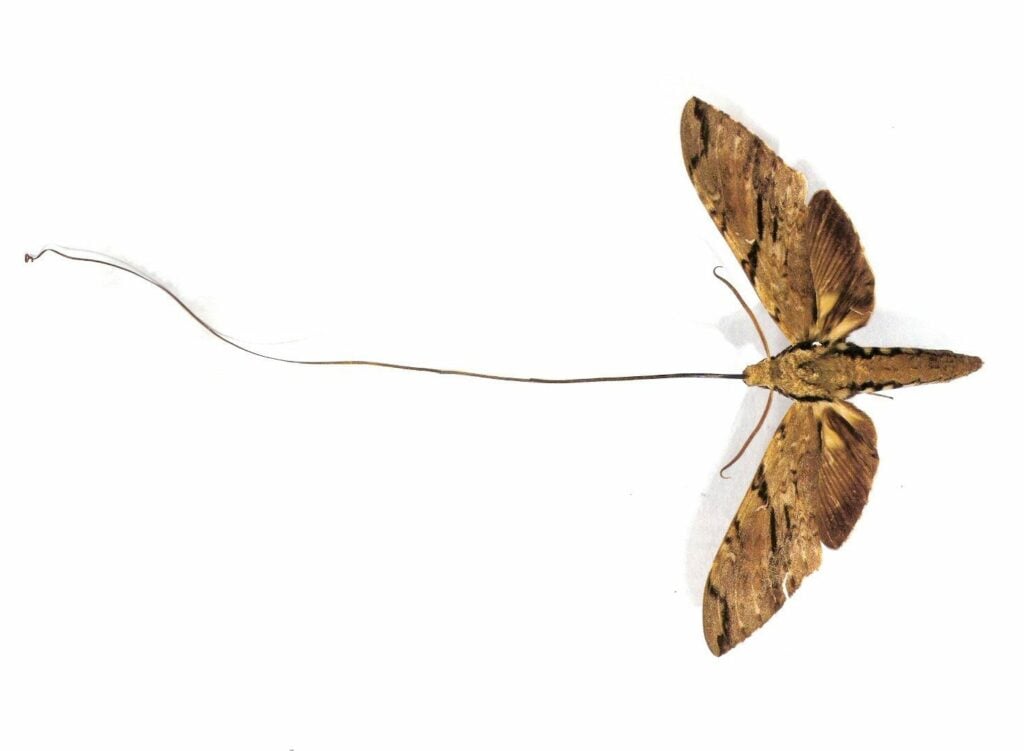Charles Robert Darwin is celebrated as one of the most outstanding British scientists. His works in Biology and his famous theory of Evolution helped transform how we understand the world and ourselves. But did you know that his theory ultimately led to the discovery of an exotic moth species?
Charles Darwin received orchids from a friend and noticed that one was unusually long. He theorized that there must be an insect capable of pollinating the kind of orchid with long mouthparts. The moth was ultimately discovered a few years later.
Darwin’s Fascination with Orchids
James Bateman, a well-known orchid grower, sent a box of orchids to Charles Darwin on January 25, 1862. Darwin, as a naturalist, grew curious of the species of orchids he received, and since the names of each orchid were not included in the box, he wrote to Bateman to inquire about them.
Bateman provided the information Darwin requested. But Darwin grew especially curious about one of the orchids he received. This particular orchid, as Darwin realized, was part of the Angraecum species, commonly known as the Madagascar Star Orchid. Darwin was mainly interested in the length of its nectary. The orchid has slender floral spurs where the nectar is stored. The stimuli usually reach around ten to eleven inches long, but its nectar is only found at the bottom two inches of the flower. (Source: Oxford Academic)
Its highly long nectar tubes were what caught the eye of the famed biologist and his contemporary, Alfred Russel Wallace. According to Beth Askham in her article for the Natural History Museum in London, Darwin wrote to Wallace, Good heavens, what insect can suck it! Wallace replied that such a moth might be safely predicted to exist in Madagascar.
Darwin deduced that if there was such an orchid, there was an insect capable of pollinating it. Otherwise, it wouldn’t have existed in the first place. And in a few years, Wallace was able to intelligently hypothesize that should that kind of moth exist. It would probably belong to the Sphingidae family, commonly known as the sphinx moth. He even suggested that it may be a close relative of the Xanthopan morganii. (Source: Smithsonian Magazine)
Discovering the Darwin Moth
And in 1903, around forty years after Darwin and Wallace’s discussion, scientists Lord Walter Rothschild and Karl Jordan did discover a moth in Madagascar that perfectly fitted the prediction of the two. The Madagascan moth had a tongue length of more than eleven inches. The moth extracted the nectar from the Madagascar star orchid with ease. (Source: Smithsonian Magazine)
It is a giant moth, and it is known to have the longest tongue, or proboscis, of all the world’s insects. Fondly called the Darwin moth, the Xanthopan praedicta was labeled as a subspecies of the African mainland’s Morgan’s Sphinx or Xanthopan morganii.
Both Darwin’s and Wallace’s hypothesis was correct – there was a moth existing that could pollinate the orchid, and the moth did belong to the Xanthopan family. The month was named Xanthopan morganii praedicta, about how it was predicted by Darwin some forty years earlier.
The moth is now commonly known as Darwin’s moth or Wallace’s sphinx, in honor of the history of its prediction. Incidentally, Darwin’s prediction of the existence of this moth also greatly supported his theory of Evolution. (Source: Daily Mail UK)
